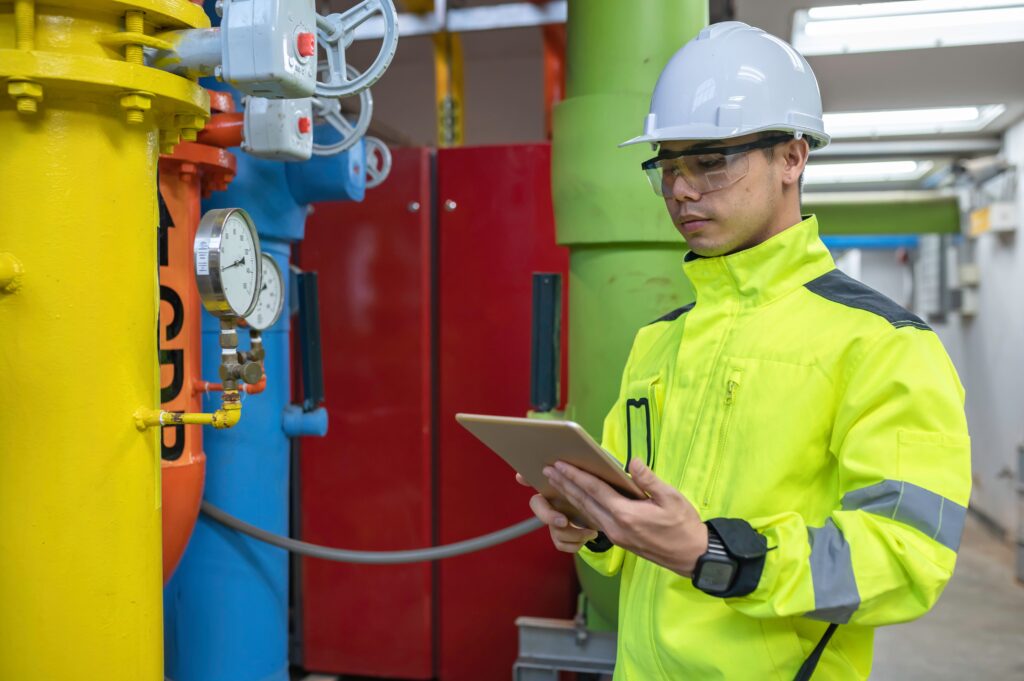HVAC and other field service technicians’ attire have traditionally focused on being practical and functional. However, today’s trend is for HVAC technician apparel to be both not only functional but also promote safety. Modern safety apparel provides superior protection for the technician’s particular work environment.
How HVAC Uniform Safety Has Evolved
Today, HVAC uniforms incorporate new safety technologies that provide greater protection for the technician and are often much more comfortable. These items are excellent examples of improved clothing and PPE accessories using the latest flame-resistant materials. These HVAC products feature superior protection using the latest construction technology for flame-resistant clothing.
New technology for flame-resistant clothing includes:
- Self-extinguishing clothing materials
- New flame resistance construction materials, including Tecasafe® Plus and CXP Nomex®
- Flame-resistant cotton clothing, including Indura® cotton and UltraSoft® cotton blend
The latest flame-resistant clothing is more comfortable, breathable, and less tiring to wear for a long day’s work. Many PPE and FR-type flame-resistant clothing selections are available for HVAC and plumbing service workers.
What Do FR, FRC, PPE, and ATPV Mean for Service Technicians’ Uniforms?
Specific standards for HVAC and plumbing service technicians’ uniforms are set by ASTM (American Society for Testing and Materials). The ASTM standards are:
- FR (Flame Resistant) – This rating refers to the ability of materials to self-extinguish once removing the ignition source.
- FRC (Flame Resistant Clothing) – Quite often, customers concerned about safety refer to apparel or garments resistant to flames as “FRC.” The FRC acronym is commonly used for business quotes or bids for safety clothing.
- PPE (Personal Protective Equipment) – The recommended ANSI (American National Standards Institute) rating for PPE was created to protect service field workers from injury or becoming ill resulting from coming in contact with electrical, mechanical, chemical, or other physical workplace hazards. PPE may include safety glasses and shoes, gloves, earplugs, hard hats, coveralls, or full-body suits.
- ATPV (Arc Thermal Performance Value) – This is a rating for an attributed value for service workers’ clothing or materials for their resistance to exposure from electrical arc discharges. The higher the APTV value, the more protection is provided.
What Are the Primary Concerns for HVAC Technicians’ Apparel?
HVAC technicians work in various conditions from spending many hours in a refrigerated freezer to working on the AC atop a building in the hot sun. Therefore, their apparel should be congruent with the conditions in which they are working as service workers’ apparel is designed for a specific environment.
When working in a hot environment, such as the rooftop of a building, thermal protection is essential. Some of the new breakthroughs in textiles for high heat are “smart textiles” according to research at ACS Applied Materials & Interfaces.
Promising New HVAC and Plumbing Technicians Work Clothes Technologies and Trends
Smart Textiles: This new technology incorporates several materials to create a unique textile property. Gloves worn in a heated environment cool the hand; while worn in cold environments, they heat the hands. Smart textiles have the potential to revolutionize apparel for HVAC and plumbing technicians.
New Uniform and Apparel Finish: Depending on the job requirements, there are newer uniforms and apparel fabrics and technology for HVAC technicians. They have higher visibility and are more forgiving, moving from extreme climates (cold) to another (hot).
New PPE Cooling Innovations: Today, staying cool may mean wearing the correct PPE. Working in extreme conditions has become much easier and more productive with cooling or heating technologies for PPE equipment.
Some PPE cooling methods include:
- Water-Cooled Apparel – Service technician apparel with cooling tubes sewn into the garment with a power-assisted device help circulate the fluid, typically water. This option is very functional but tethered to the power source and limits operating range, which is not productive in some working environments.
- Cooling Vests – This is apparel constructed to hold ice packs or other cooling substances. They provide greater mobility but are limited to a range of operations due to the thawing of frozen cooling liquid.
- Air-Cooled Apparel – This is affective in an extreme, hot environment and uses a tube to move compressed air through the vest to cool the skin.
- Wet-Over Clothing – Although an effective cooling method by wetting cotton material worn over water resistance clothing, long-term utilization is limited due to water evaporation. Usually more effective in low humidity, high-temperature conditions.
Some PPE warming methods include:
- Wearing proper PPE clothing with a removable fleece liner, balaclavas that can change from full-face warmer to the neck, and battery warmed jackets
- Cold-weather gloves that water-repellant with an air-wicking and warm-air-trapping liner
It is important to know the different standards for water-resistant, waterproof, and water-repellent when shopping for HVAC and plumbing safety apparel.
- Waterproof and water-resistant designated apparel are designed to block water penetration.
- Water-repellent indicates material coated with chemicals to shed water before penetrating the apparel.
Companies staying relevant in the HVAC and plumbing industry will need to be current with the latest industry trends, including technicians’ apparel. Providing the appropriate apparel helps the technician to stay safer and more productive.



